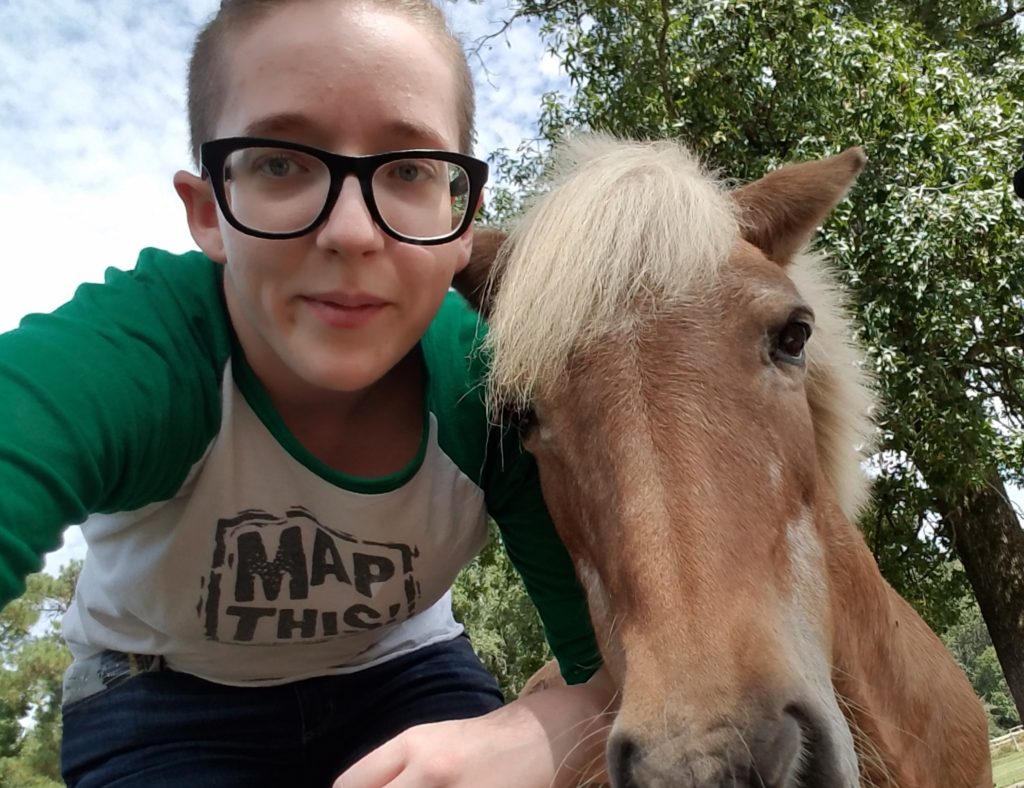What will the World Be like by 2040 for GIS Professionals?
In 2020, we have seen how GIS has become absolutely ingrained in how the modern world works and operates. In another 20 years, what will GIS technology or the world for GIS professionals be like for them? We asked members of our team at GEO Jobe about their predictions for 2040. Here’s some of their perspectives on the subject:
Neill Jobe (Founder)

“Probably in the next 20 years, we’re going to use GIS to be more and more of a predictive tool than a reactive tool. I think systems, through machine learning, will help to identify patterns and trends of things we’re not even aware that we’re looking for. GIS is a centralized data repository; as more data gets added and data gets bigger, the most obvious next step is to make it intelligent (allowing it to learn from itself, machine learning, etc). Once that happens, we’ll see things that we were never aware existed, and it will be real-time.
For example: You may be riding in your autonomous vehicle and notice the vehicle brake at an intersection because it’s processing all the historical data associated with the intersection to predict the probability of an accident occurring (utilizing data such as weather, street conditions, time of day, mph, traffic around the vehicle, even currently public sentiment/mood, etc.).”
David Hansen (Chief Executive Officer)

“Machine learning, GeoAI, and IoT better be part of it. We’ll see big(ger) data and interconnectedness of the world, and the collapse of Tobler’s first law of geography (Everything is related to everything else. But near things are more related than distant things.).”
Nick Lawalin (Senior Solutions Engineer)

“I believe GIS will be 3D, moving indoors, and smarter. 5G is going to open a lot of doors for GIS to ingest real-time data feeds.”
Timothy Michael (Senior Solution Engineer)

“I think the biggest changes are going to come from ever-increasing data streams, new processing capabilities, and better/faster ways to process and visualize data in near real-time. I think we will also see continuing adoption of cloud technologies, especially as GIS systems as a whole become more seamlessly integrated between available platforms.”
Michelle Brake (Solutions Engineer)

“I suspect we will have moved from traditional desktop based workflows, on-going paper processes, and manual data updates to online/service based options. We are already moving in this direction but it will have increased exponentially with more technology in the hands of end users and more robust options for public consultation/participation. This data would drive better map products and lay way for providing more comprehensive information products for decision making (from what bus to take to where to increase public transportation infrastructure).”
Christine Munisteri (Solution Engineer / sUAS Pilot)

“In 20 years I think people in the GIS industry will have fully integrated virtual reality into their workflows to improve the planning and execution of tasks, as well as to enhance worker safety. If people can access powerful enough computers, I imagine VR will be paired with high resolution imagery and 3D models, and field work may become obsolete (to some extent, anyway). That being said, 20 years is almost my entire lifetime, so it’s hard to imagine what’s possible….”
Jeff Lawrence (UAV Business Development)

“In 20 years not only will there be a totally different view of healthcare in the US, and the world perhaps, there will also be a different attitude towards government’s role in US healthcare. There may be a shift in attitude about single provider models etc. That more concerns how care is administered, which is somewhat removed from GIS (maybe not for UAV though). I think GIS will enable another milestone in healthcare by radically changing the methods and ways by which patients and doctors collect and process health data.
Patient data collection is the next step in preventative health care. Now, the only data doctors collect on patients comes from visits. Those visits are from office checkups, at clinics, or at emergency rooms. Many patients already collect enormous amounts of health data that they have no way of sharing with their doctors. Every smart watch, heart monitor, or exercise tracker is full of data beyond the patient’s weight, temperature, blood pressure, and any blood work results the doctor gets once a year. For example, a patient’s weight may be the same for one annual visit to the next. That’s what the doctor sees now. If a patient’s weight fluctuates significantly between visits and is captured on the activity device, that gives the doctor more information about the patient. Information like that may cause the doctor to probe the patient about why that variability occurred. Was it a temporary thing or is it a sign of something that needs attention? Technology exists today to integrate the information on trackers to health providers existing health portals that contain all the traditional data collected during medical visits. Apps can be written to synchronize (even automate) all the tracker data to ‘MyHealth.com’ portals most health providers already maintain.
Those exercise trackers don’t just collect the number of steps the owner takes. They know where those steps were taken (GIS), how quickly they were taken and over what duration. They know the steepness of the walk or bike ride or run the owner did, and their heart rate during the event. That sounds like a stress test to me. The trackers even measure the recovery period and its dynamics.
Moreover, the trackers know the specific locations of patients who wear them. Are steps taken outdoors in the fresh air better than steps taken indoors in conditioned environments? Are steps outdoors on the greenway or in the park better than steps on the sidewalk next to a heavily travelled road?
Using GIS applications to evaluate patients’ movements, apps could identify the patient’s proximity and frequency to toxic or hazardous waste sites. That may be useful data for a doctor treating a cancer patient. Think about how significant it would be right now if you could track the movements of a person with an illness. Outrageously, you could literally have information about who and how many people the infected person came within six feet of, over the last two weeks.
Some trackers monitor noise levels. Analyzing patients’ exposure to chronic loud environments can assist with caring for hearing loss.
The milestone that GIS enables by 2040 then is the proliferation of private patient to doctor locationally specific health statistics and environmental data for more robust preventative care and limiting infectious diseases. The government’s role would of course be to provide incentives to higher risk patients who don’t already have trackers to begin using them. The Government would also need to establish guidelines for how trackers identify themselves to others for tracking contagion. This is where the UAV comes in. UAV Unmanned traffic management is already struggling through the problem of how drones identify each other for unmanned air traffic control. There is much progress being made on this front and once complete, this technology could be transferred to the personal activity tracker market.”
Courtney Kirkham (Application Developer)

“The beauty of GIS is that it touches everyone’s lives, even if they don’t realize it. The field will continue to grow, as there will always be a need to understand the “where” of data. As technology advances and we are better able to implement solutions, more and more of the field will transition into being developers, who craft the solutions, or data scientists, who interpret the results of those solutions. I like to think that, as the world at large gains a better understanding of GIS and its applications, there will be more opportunities for finding creative solutions.
As is the way with technology, that which we once saw as science fiction may not be too far off. In particular, I look forward to seeing how GIS evolves as we map celestial bodies beyond our own.”
Brice Jones (Junior Application Developer)

“So, the real answer is that I just don’t know. 20 years is a very long time, almost as long as I’ve been alive, and definitely longer than I can remember. And if there is one thing that has been a constant over those 20-ish years, it is that technology has always been progressing, but almost never in the way people expect it to. Certainly, we can expect what we already have to get better, aerial photography to improve in quality and availability, machine learning to more quickly and accurately sort through and categorize enormous amounts of data, and of course the internet to make that data more readily available. But other than that? Who knows. It’ll certainly be exciting to find out, though.”
Blake Bilbo (Head of Customer Support)

“The future of wearable technology, especially with Augmented Reality will advance in a way that will impact geospatial professionals profoundly. Just as you would turn data layers on and off in a GIS on the screen of your computer, you will have wearable technology that allows the wearer to select and view data layers in real-time overlaid in the world around them. Augmented Reality will advance from where it is now; being admittedly useful to certain niche professions and for novelty entertainment apps on the consumer-level, to being the preferred way people will view and work in the world around them. And because of that, the demand for GIS data served in real-time will result in more crowd-sourced data implementation in volumes that can only be processed by AI and machine learning. Any GIS operations that involve heavily repetitive operations, such as digitizing, cleaning, and data interpretation will need to adapt to Machine Learning and AI implementation in order to ensure these demands for nearly real-time GIS Data are met.”
So, the most common themes from these perspectives seem to point to near real-time GIS data, normalizing the implementation of artificial intelligence and machine learning to our professional lives, and (given the current atmosphere at the time of writing this) a huge leap in how GIS and Healthcare work together more elegantly.
So what do you think? Please feel free to share your thoughts and discuss what 2040 will look like to GIS Professionals.


